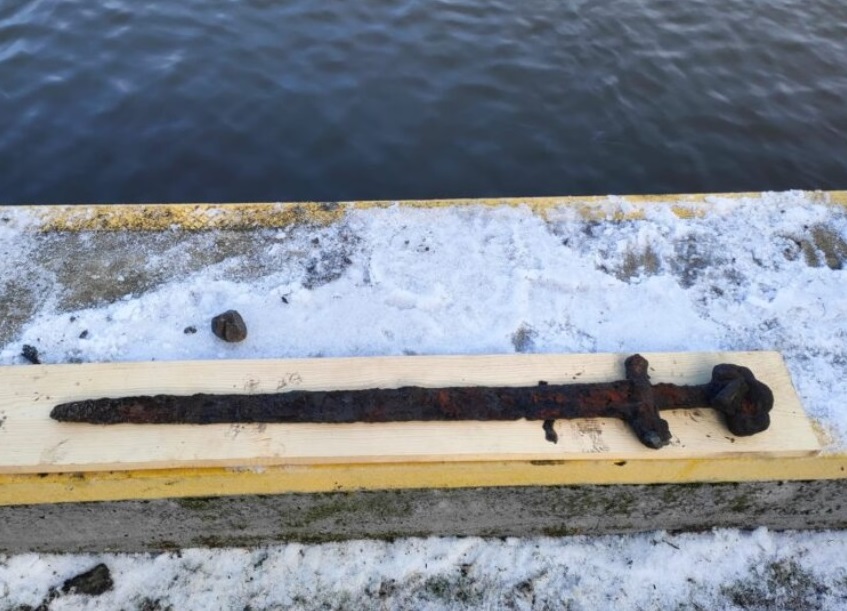Thousand-year-old sword found in Polish river
A sword believed to be over 1,000 years old has been found at the bottom of a river in Poland. The discovery has sparked speculation that the item may have belonged to the Vikings. However, an expert has expressed scepticism.
The sword was discovered in Włocławek, a city of 100,000 in central Poland, during dredging works on a marina in the Vistula river. The find was announced last week by the municipal sport and leisure centre, which shared pictures of the item.
The centre said that it had consulted with Olaf Popkiewicz, an archaeologist and weapons expert, who gave an initial estimate that the sword could date back to the 9th century – a time before the Polish state was founded.
The Provincial Office for the Protection of Monuments (WUOZ) was immediately notified and the object was transported to the nearby city of Toruń, where it will now undergo conservation and further research.
The finding should be considered a “major archaeological sensation”, confirms Wojciech Sosnowski from the archaeology department at WUOZ in Toruń.
“We are dealing with a very delicate object and a very valuable one,” he told local news website Dzień Dobry Włocławek. “The sword needs to be urgently conserved. The situation is dynamic, we are only just collecting information about this object.”
Both Dzień Dobry Włocławek and national broadcaster RMF FM speculate that the sword could have belonged to a 9th-century Viking. However, Robert Grochowski, an archaeologist, remains sceptical about this theory.
“I don’t know where the idea that the sword belonged to a Viking comes from,” he told the Gazeta Wyborcza daily. “Without detailed research, this is completely unjustified. It is difficult to say anything more than the fact that it is an early medieval sword.”
The expert explained that these types of swords were formerly often referred to as “Viking swords”, but are now classified among the so-called Carolingian swords created around the Rhine on territories that are now part of Germany.
Rhineland swords were widely traded and may have reached Central Europe, including Poland, in part via Scandinavia.
The fact that a sword is decorated with Scandinavian patterns does not necessarily mean that it was a Viking sword. “Scandinavian craftsmen only framed them according to their own fashions and needs,” explains Grochowski.
More than 90 swords dating from the second half of the ninth to the twelfth century have been found Poland, with the majority dating from 950-1100.
The sword found in Włocławek will most likely undergo research and conservation at Nicolaus Copernicus University in Toruń and will later return to Włocławek to be displayed at the city’s history museum.

